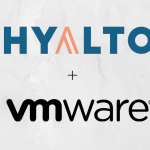‘The MSP’s dilemma’: Our own Alan Zurakowski featured on Great Things with Great Tech Podcast
 Last year saw the launch of a great new podcast – GTwGT, Great Things with Great Tech. As the name suggests, GTwGT highlights technology companies that are doing great things.
Last year saw the launch of a great new podcast – GTwGT, Great Things with Great Tech. As the name suggests, GTwGT highlights technology companies that are doing great things.
The host is no stranger in our industry – global technologist and seven-time VMware vExpert Anthony Spiteri, who is part of the product strategy team at Veeam.
HyAlto was proud to be in the spotlight for GTwGT’s 12 episode. Our CEO, Alan Zurakowski, discussed with Anthony how HyAlto began life in 2008 as AirVM – a white-label, IaaS cloud platform for resellers.
Back then, AirVM developed its own on-premise, self-serve automation and billing tool around VMware’s Vcentre. This tool, called Air Assembly, intended solely for the benefit of AirVM’s back office, soon attracted the interest of other managed service providers eager to license and adopt it for themselves.
During the Podcast episode, Alan and Anthony discussed how and why AirVM pivoted and became the pure SaaS play we know today as HyAlto – an agnostic platform for multi-cloud monetization of public, private and hybrid clouds. More importantly, they dig into how the cloud market as a whole has evolved during these same years, to challenge the conventional private cloud managed services business.
Enterprise clients large and small today expect the flexibility to mix and match whatever combination of public and private cloud services best suit their needs and prefer to work with a single trusted provider.
“This is the MSP’s dilemma,” Alan says. “SMBs and larger enterprises want help to manage their services, as well as their costs, and MSPs have limited tools to do that, certainly not for both public and private cloud services together, and then they are not tracking and pushing that usage and billing information into a professional services automation (PSA) system.”
As Alan and Anthony discuss, the challenge and the opportunity for MSPs is to have in place the automation tools and the single point of management that will reduce the cost and complexity of a multi-cloud service offering. A client needs to keep their cloud sprawl and costs under control, while the MSPs must be able to accurately track usage by the minute and feed this information into the billing system at month end.
“I believe personally there is a massive opportunity for service providers to leverage a public cloud and turn it into some kind of managed service, some sort of revenue-generating opportunity, because without a control plane, Customer A can just go and do anything in a public cloud, willy nilly,” Anthony says. “So, if the service provider can then leverage a control plane to have some awareness and control over that, that becomes a very good proposition for them.”
For an insightful discussion on how the managed services industry has evolved over the past decade to where we are today, check out GTwGT Podcast Episode 12.






